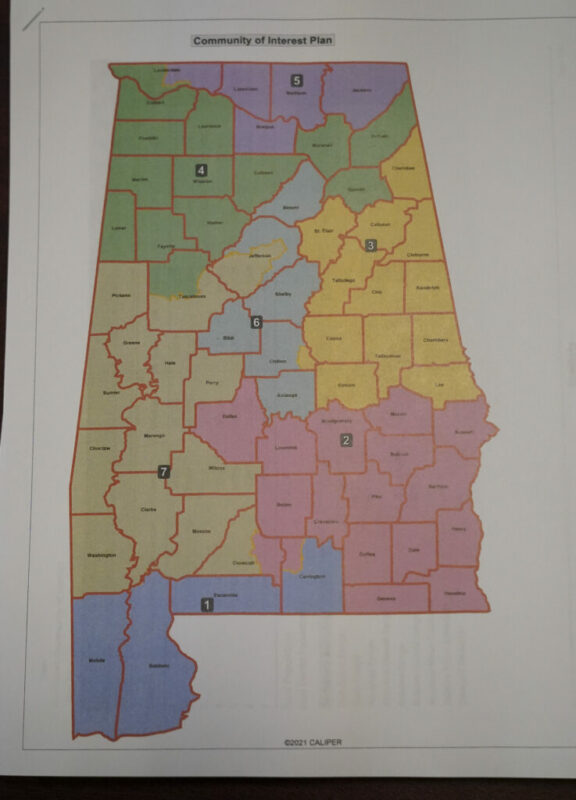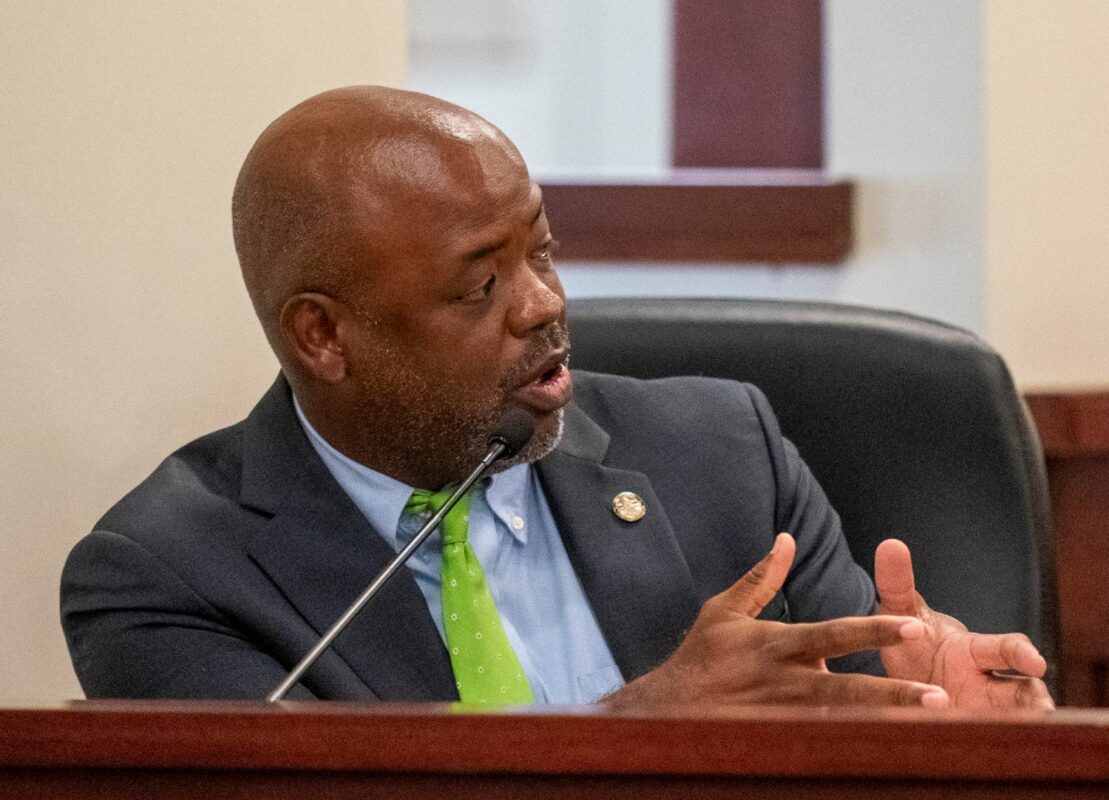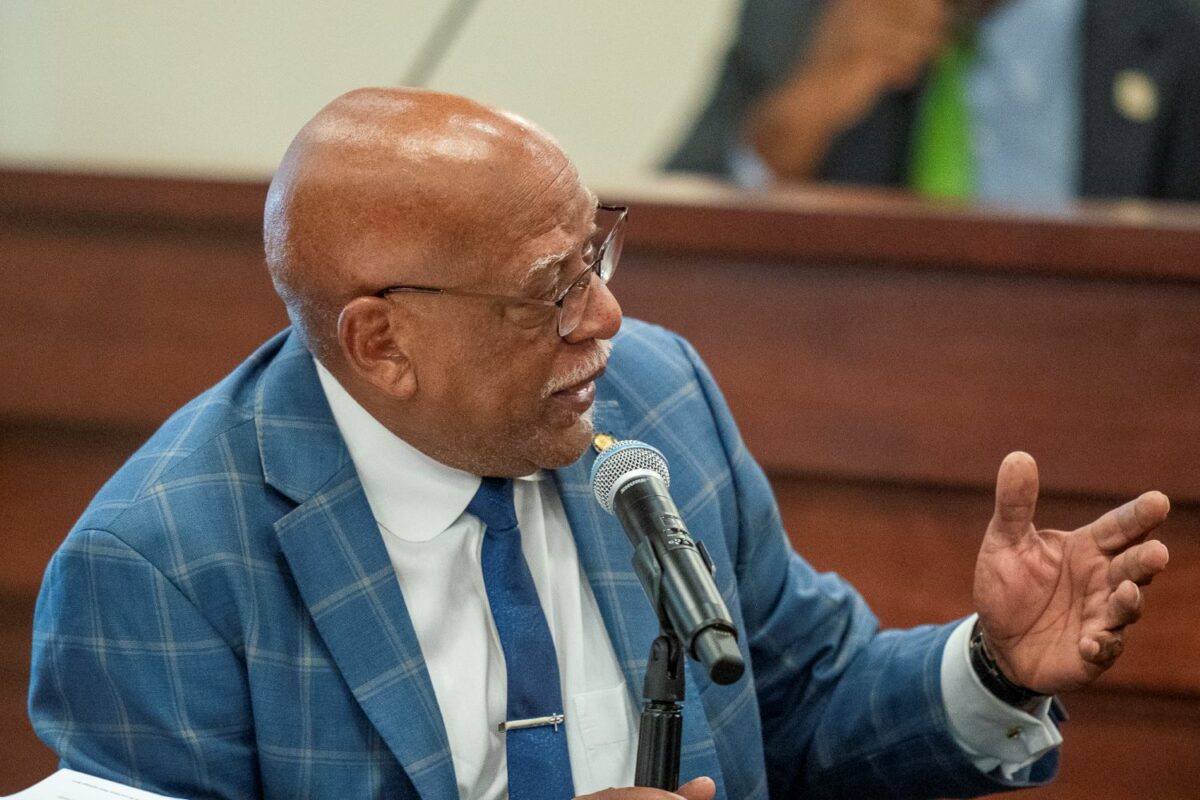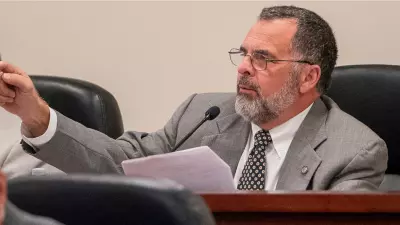A Republican-dominated reapportionment committee approved a new state congressional map that creates a majority-Black congressional district and one that is 42% Black.

The party-line vote, coming on the first day of a special session for redistricting, came after Democrats said they were being ignored in the process and after two hours of discussion that often felt like the start of legal arguments for a federal court hearing scheduled next month.
“We are just placeholders, seat holders up here,” said Sen. Vivian Davis Figures, D-Mobile. “We have no voice whatsoever.”
The map, dubbed the “Community of Interest” map, has one majority Black voting age population at 51.55% in the 7th congressional district, taking in Birmingham and most of the western Black Belt, and the 2nd congressional district in the southeast with a 42.45% Black population, called an “opportunity” district.
The 2nd congressional district would have the most changes from the current map. It would add Dallas and Lowndes counties, both strongly Democratic, to the district. Autauga and Elmore counties, both strongly Republican, would be removed from the district. Unlike the current map, Montgomery would be wholly in the district.
Republicans most kept quiet during the meeting, deferring comments to Rep. Chris Pringle, R-Mobile, the chair of the committee. Pringle said the community of interest plan “maintained the core of the congressional districts” and followed the court’s directions to create an opportunity district.
“It keeps the Black Belt in just two districts,” he said. “The Black Belt is not split three ways now.”
But several Democrats, citing Alabama’s long history of racially polarized voting, said the only way to meet the court’s requirements was to create two majority Black districts.
“The district has to have a majority Black population,” said Rep. Chris England, D-Tuscaloosa. “That’s just fact.”
The Alabama Legislature must approve a new congressional map by Friday, the deadline set by a federal court to submit new federal maps.
New districts

The state has had a single majority-minority congressional district since 1992. In November 2021, the Alabama Legislature approved new congressional maps that retained that configuration. A group of plaintiffs sued to block the maps, arguing that the proposal pushed most Black voters into one district, muting their voices in the political process and making it difficult for them to form alliances with like-minded white voters.
A three-judge federal court panel, consisting of two Trump appointees, ruled in January 2022 that the maps likely violated Section 2 of the Voting Rights Act, which prohibits discriminating against voters based on race, color or membership in a language minority group.
The court, citing the high degree of racially polarized voting in Alabama – where white Alabamians tend to support Republicans and Black Alabamians tend to support Democrats – said the remedy appeared to be a second congressional district where Black voters “either comprise a voting-age majority or something quite close to it.”
The Supreme Court stayed the ruling for the 2022 elections but sided with the lower court in a surprise decision last month. The three-judge panel set a July 21 deadline for the state to approve a new map. If it misses the deadline, or approves a map that the court finds unsatisfactory, a third party known as a special master could draw the maps.
It’s unclear if the map voted out of committee, proposed by Pringle and committee co-chair Sen. Steve Livingston, R-Scottsboro, will meet those requirements.
Livingston declined comment after Monday’s meeting. Pringle was not available for comment. Sen. Arthur Orr, R-Decatur, suggested there were “things we need to tighten up” on the map, though he did not elaborate.
Different maps
The committee considered several different maps during the meeting, and Pringle acknowledged that he did not know the provenance of all of them. During the meeting, Pringle asked multiple questions about each map about whether or not two incumbents would be in the same congressional district, which his and Livingston’s maps does not.
In a map with two majority-Black districts, it’s likely that a Republican representative would be drawn out of a job.
“The interesting part for me, is that it puts Congressman Gary Palmer in the same district as Congressman Mike Rogers,” said Pringle about a map drawn by Alabama Democratic Conference chair Joe Reed.
Both Democrats and Pringle seemed to be using time to make arguments about process and the appropriate proportions of Black voters in the district that seem likely to be heard again at a federal court hearing on Aug. 14.
“I know no matter what I do, you’re getting on the record that you don’t feel comfortable, and I understand that,” Pringle said to England near the beginning of the meeting.
Pringle asked Sen. Rodger Smitherman, D-Birmingham, about whether or not he would support a map with a 40% Black voting age population as an “opportunity” district.

On the other side, England continued building an argument, though previous public hearings and his tweets, that the entire process lacked transparency and was controlled entirely by the Republican supermajority lawmakers outside of the public’s view.
“That’s how terrible this process was,” he said to reporters after the meeting. “The public did not get an opportunity to vet the map that passed today.”
Pringle has said previously that the staff at the State House has been overwhelmed with the number of maps submitted to the committee, with some coming as far away as New Zealand.
Democrats said that they did not have enough time to assess the maps, which sometimes led to some testiness. After England said the committee was “unprepared to ask real empirical questions about the methods we don’t really know anything about,” Pringle suggested that England ask the court for an extension of time.
“How much more time do you need?” he asked. “Let’s go down to the courthouse to get extended deadlines. We can accomplish all these goals you want to accomplish.”
“Quite frankly, I wasn’t part of violating the Constitution,” England responded.
Alternatives

England and Figures both supported a map brought by the Allen vs. Milligan plaintiffs, which has two majority Black districts carved out of south Alabama.
Some Democrats on the committee favored another approach. Smitherman and Senate Majority Leader Bobby Singleton, D-Greensboro supported a map that would make Jefferson County, the home of Birmingham, the entirety of the 6th congressional district. The 7th congressional district, which currently includes Birmingham and most of the Black Belt, would be extended east to include Montgomery and several Black Belt counties.
Singleton, whose district is in the Black Belt, and Smitherman both said the configuration would serve their constituents better. Singleton said the proposal kept “90% of those counties that are in Black Belt together … in one particular district instead of splitting them into two.”
Smitherman said Birmingham and the rural Black Belt made a poor fit in a single district.
“You heard the senator from the Black Belt saying that there’s a conflict of interest being the largest urban metropolitan area in the state, and yet we are connected with an area that’s more to the south and rural,” the senator said after the meeting.
The Black Belt district would be just 49.4% Black, while the Jefferson County district would be 39.6% Black. Smitherman said he believed Democrats could win the Jefferson County seat with those numbers, but many of his colleagues were not convinced. Figures said she would be more comfortable with a district with a majority-Black population.
“I would rather rely on the numbers to be there to give us that opportunity,” she said after the meeting. “If the numbers are there, then it is up to us to turn the vote out.”
Neither the Milligan plan nor the Jefferson County plan made it out of committee.
England, speaking to reporters after the meeting, said he had trouble with the process of the maps being passed this session. He said that he has not seen many of these submitted maps, and he did not see the committee’s map until Friday. Pringle said in the meeting that all committee members received today’s discussed maps at the same time.
The moves drew some criticism from national organizations.
“It is clear that Alabama Republicans are not serious about doing their job and passing a compliant map, even in light of a landmark Supreme Court decision,” said Marina Jenkins, Executive Director of the National Redistricting Foundation (NRF), in an emailed statement Monday afternoon. “This map and the process that led up to it are as deceitful as they are shameful.”
House Speaker Nathaniel Ledbetter, R-Rainsville, said he thought the 2nd congressional district “could go either way” under the community of interest map.
“All that the courts asked for was a fair chance,” he said. “And don’t think there’s any question about that, as a matter of fact.”
The maps should be in House and Senate committees on Tuesday.
Jemma Stephenson covers education as a reporter for the Alabama Reflector. She previously worked at the Montgomery Advertiser and graduated from the Columbia University Graduate School of Journalism.
The Alabama Reflector is an independent nonprofit website covering politics and policy in our state. We look at the problems affecting Alabamians, and search for solutions. We connect readers with the decisions made in the hallways of the State House and try to give a voice to those outside it. We write stories about people in power and men and women on the margins. We hope to reflect what our home is, and what it could be.







